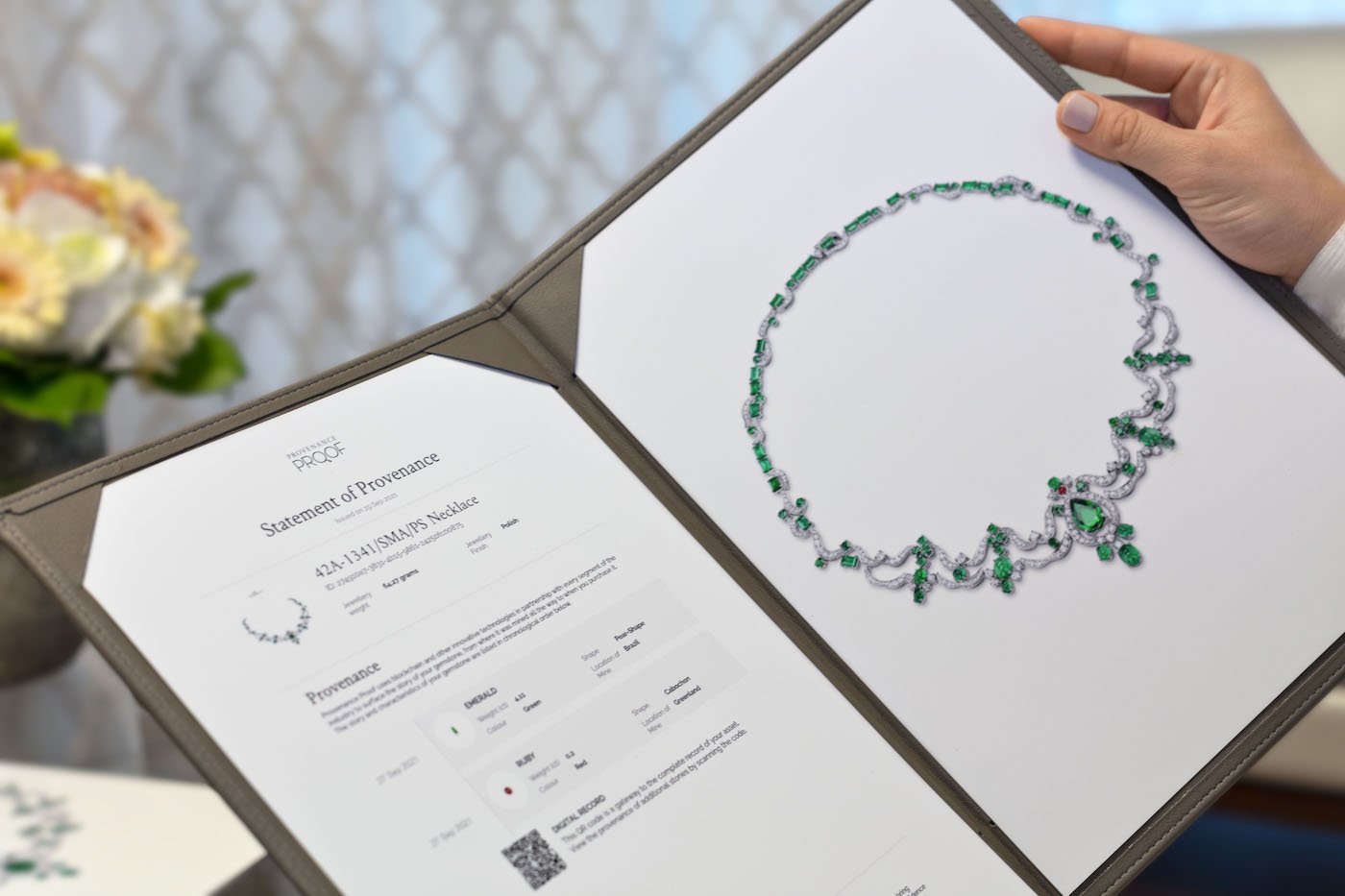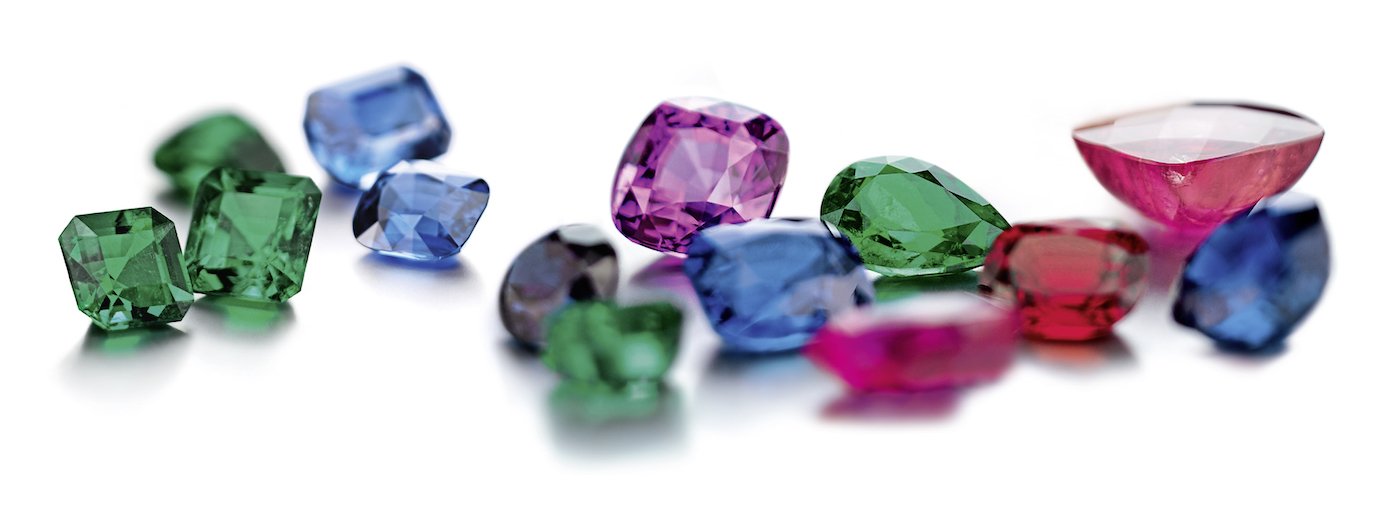xactly 170 years ago, in 1854, Gübelin was a modest watch and clock shop in the Swiss city of Lucerne. Having introduced its first jewellery lines, the company quickly expanded. In the early twentieth century, synthetic gems appeared in what was a growing jewellery market. For the Gübelins, this was a clear indication of the need for a system to authenticate genuine stones.
The company began to issue certificates which guaranteed the provenance of the stones it used. It also opened its own jewellery workshop and, in 1923, established a small gemmological laboratory which examined and authenticated the stones in its jewellery… a function which Gem Lab continues to fulfil a century later.
-

- CEO since 2011, Raphael Gübelin represents the sixth generation at the head of the Gübelin group
Raphael Gübelin represents the sixth generation at the head of the firm. This was, he says, “a pioneering approach, rooted in our family’s core values and our passion for gemstones. My great-uncle, Eduard Josef Gübelin, was an accomplished gemmologist and scientist. He found that the complex patterns inside a stone could be seen in other stones from the same mine. This laid the foundations for a system to precisely identify and authenticate coloured gemstones that would lead to a process which identifies a stone’s origin, its authenticity, even treatments it has undergone. This has always been about authentication and transparency as a way to build trust.”
Gübelin has continued to develop and make improvements to procedures, as Raphaël Gübelin explains: “We could identify, for example, a ruby’s country of origin but not the specific mine or when it was extracted. This, combined with environmental and sustainability considerations, set us thinking about how we could trace stones all the way from the original mine. The result, in 2017, was the launch of the Provenance Proof initiative and our physical tracers. We worked with an offshoot of the Federal Institute of Technology in Zurich to develop a unique synthetic DNA tracer which, when ‘inserted’ into a stone at the mine, makes it instantly identifiable.”
-

- Each stone in Gem Lab’s Reference Stone Collection can be traced to its original mine
In practical terms, a mine (or a mining company, even a government body) can contact Provenance Proof, which is an independent subsidiary within the Gübelin group, and request one of these nanolabels, which identifies the mine of origin, the mining company, the country of origin or the year of production. “The beauty of this technology is that it protects against counterfeiting and fraudulent claims of origin. It can identify a stone on multiple levels [origin, extraction date, treatments]. Analysis is through basic PCR testing,” adds Raphael Gübelin.
As well as physical tracers, Provenance Proof leverages blockchain technology to secure data. The two technologies are designed to function together as part of the certification process, but can be used independently. Says Raphael Gübelin, “Once collected, data has to be secured and blockchain was the obvious solution. From one stakeholder to the next, every step in the stone’s history is recorded in an immutable ledger.”

Launched in 2019, Provenance Proof Blockchain is a blockchain-based digital logbook. Every stage in the value chain is recorded, from the rough stone to the finished piece of jewellery, and can be “securely shared”. The technology is open for anyone to use.
“Most of the requests we receive are from mining companies but we are also in contact with jewellers who wish to identify their stones and even their settings,” says Raphael Gübelin. “The technology applies to stones of any size. Companies can also choose to include additional information such as Fairmined certification, human rights due diligence or environmental impact. Applications are wide-ranging and enable real global traceability that will benefit a transparent, eco-responsible approach.” The Lucerne firm has also launched the online Provenance Proof Marketplace to facilitate access to transparently traded gems.
-

- Dancing Dunes emerald and diamond necklace by Gübelin
Can Gübelin’s physical tracers be incorporated into diamonds as well as coloured stones? Yes and no: the tracer could be ‘embedded’ into the stone at the mine… but would be erased by subsequent chemical processes, as Raphael Gübelin explains: “The physical tracer wouldn’t withstand the various treatments a diamond goes through from its rough state to being ready for setting, and would therefore need a multiple tracing system. Of course, necessity is the mother of invention. Such a system would probably have an impact on the end price, but because tracers are specific to each company, cost would be proportionate to volume.”
Mine or jeweller, it all comes down to individual companies’ priorities and how they wish to use the technology to create value. The Kimberley Process was introduced in 2003 to eliminate trade in “conflict diamonds”. This led to the establishment, in 2005, of the Responsible Jewellery Council. Now the technology is available to strengthen and secure the traceability of gemstones.
-

- Greenland ruby rings by Gübelin
“We launched Provenance Proof in 2017 and added blockchain technology in 2019. This corresponds to the value of transparency that has been ours for more than a century,” notes Raphael Gübelin. “In February 2023 we introduced Gemtelligence to our Gem Lab, an AI tool which enables us to interpret even more data and strengthen analysis. It provides precise information on the origin and age of a stone, which can be a ruby, a sapphire or an emerald, physical descriptions and treatments. Gübelin has always employed technology to promote transparency, not as a marketing tool.”
The family firm has conserved the pioneering mindset of its early days and this is no doubt one of the reasons for its persistence in developing tools to drive transparency: something the jewellery industry cannot ignore.












